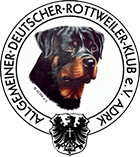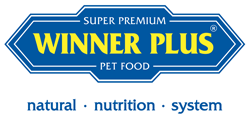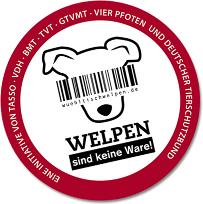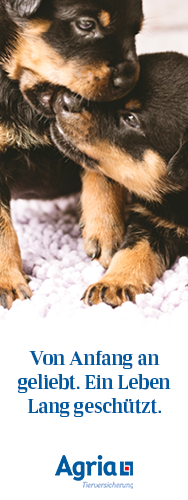| ADRK |
| Allgemeiner Deutscher Rottweiler-Klub e.V. |
Standard
Content
- Rassekennzeichen
- Key data
- Brief historical summary
- General Appearance
- Important Proportions
- Behaviour / Temperament
- Head
- Facial Region
- Body
- Limbs
- Hindquarters
- Coat
- Size and weight
- Faults
- Severe Faults
- Eliminating Faults
Rassekennzeichen
Ziel der Rottweilerzucht ist ein harmonischer, fest und stark gebauter, den Rassekennzeichen entsprechender Begleit-, Blinden-, Dienst-, Gebrauchs- und Familienhund von höchster körperlicher und charakterlicher Leistungsfähigkeit. Das Streben unserer Züchters ist stets darauf gerichtet, die Rasse nicht nur zu vermehren, sondern Form und Wesen auf breiter Basis zu erhalten und zu festigen.
Unter Rassekennzeichen versteht man die durch den berechtigten Zuchtverein erarbeitete Zusammenstellung von Merkmalen und Eigenschaften, die jeder Hund dieser Rasse möglichst ausgeprägt aufweisen soll. Dabei legt man das erstrebenswert erscheinende Idealbild, den sogenannten Musterhund (Rasse-Standard), zugrunde. Zuständig für die Festlegung und Ergänzung der Rassekennzeichen ist der Zuchtverein des Landes, dem der Ursprung der Rasse zuerkannt worden ist. Beim Rottweiler ist das der ADRK e.V. Der ADRK schickt den Kennzeichen folgenden Leitsatz voraus.
Die Rottweilerzucht erstrebt einen kraftstrotzenden Hund, schwarz mit rotbraunen, klar abgegrenzten Abzeichen, der bei wuchtiger Gesamterscheinung den Adel nicht vermissen läßt und sich als Begleit-, Blinden-, Dienst-, Gebrauchs- und Familienhund in besonderem Maße eignet.
Alle übrigen Länder, soweit sie der Fédération Cynologique Internationale (FCI) angehören oder mit diesem Verband in Vereinbarung stehen, sind verpflichtet, die Rassekennzeichen des Ursprungslandes einzuhalten, wodurch eine weitgehende Gewähr für übereinstimmende Zucht-, Beurteilungs- und Bewertungsmaßstäbe gegeben ist.
Key data
- Rottweiler: F.C.I.-Standard Nr. 147 / 24.07.2018 / GB
- Origin: Germany
- Date of publication of the valid original standard: 15.06.2018
- Utilization: Companion, service and working dog
- Classification FCI:
- Group 2 (Pinscher and Schnauzer type, Molossian type and Swiss Mountain- and Cattle Dogs and other breeds)
- Section 2.1 Molossian type, Mastiff type With working trial
Brief historical summary
The Rottweiler is considered to be one of the oldest dog breeds. Its origin goes back to Roman times. These dogs were kept as herder or driving dogs. They marched over the Alps with the Roman legions, protecting the humans and driving their cattle. In the region of Rottweil, these dogs met and mixed with the native dogs in a natural crossing. The main task of the Rottweiler now became the driving and guarding of the herds of cattle and the defence of their masters and their property. This breed acquired its name from the old free city of Rottweil and was known as the „Rottweil butcher’s dog“.
The butchers bred this type of dog purely for performance and usefulness. In due course, a first rate watch and driving dog evolved which could also be used as a draught dog. When, at the beginning of the twentieth century, various breeds were needed for police service, the Rottweiler was amongst those tested. It soon became evident that the breed was highly suitable for the tasks set by police service and therefore they were officially recognized as police dogs in 1910.
Rottweiler breeders aim at a dog of abundant strength, black coated with clearly defined rich tan markings, whose powerful appearance does not lack nobility and which is exceptionally well suited to being a companion, service and working dog.
General Appearance
The Rottweiler is a medium to large size, stalwart dog, neither heavy nor light and neither leggy nor weedy. His correctly proportioned, compact and powerful build leads to the conclusion of great strength, agility and endurance.
Important Proportions
The length of the body, measured from the point of the sternum (breast-bone) to the ischiatic tuberosity, should not exceed the height at the withers by, at most, 15 %.
Behaviour / Temperament
The Rottweiler is good-natured, placid in basic disposition, very devoted, obedient, biddable and eager to work. His appearance is natural and rustic, his behaviour self-assured, steady and fearless. He reacts to his surroundings with great alertness and at the same time even-tempered.
Head
- Cranial Region: Skull: Of medium length, relatively broad between the ears. Forehead line moderately arched as seen from the side. Occipital bone well developed without being conspicuous.
- Stop: Stop relatively strong. Frontal groove not too deep.
Facial Region
- Nose: Well developed, more broad than round with relatively large nostrils, always black.
- Muzzle: The foreface should appear neither elongated nor shortened in relation to the cranial region. The ratio between the length of the muzzle and the length of the skull is about 1 to 1,5. Straight nasal bridge, broad at base, moderately tapered.
- Lips: Black, close fitting, corner of the mouth not visible, gum as dark as possible.
- Jaws / Teeth: Upper and lower jaw strong and broad. Strong, complete dentition (42 teeth) with scissor bite, the upper incisors closely overlapping the lower incisors.
- Cheeks: Zygomatic arches pronounced.
- Eyes: Of medium size, almond shaped, dark brown in colour. Eyelids close fitting.
- Ears: Medium-sized, pendant, triangular, wide apart, set on high. With the ears laid forward close to the head, the skull appears to be broadened
- Neck: Strong, of fair length, well muscled, slightly arched, clean, free from throatiness, without excessive dewlap.
Body
- Back: Straight, strong, firm.
- Loins: Short, strong and deep.
- Croup: Broad, of medium length, slightly rounded. Neither flat nor falling away.
- Chest: Roomy, broad and deep (approximately 50 % of the shoulder height) with well developed forechest and well sprung ribs.
- Belly: Flanks not tucked up.
- Tail: In natural condition, strong, level in extension of the upper line; while paying attention, when exited or while moving it can be carried upward in a light curve; at ease may be hanging. While positioned along the leg, the tail reaches approximately to the hocks or is a bit longer.
Limbs
- Forequarters: Seen from the front, the front legs are straight and not placed too closely to each other. The forearm, seen from the side, stands straight. The slope of the shoulder blade is about 45 degrees to the horizontal.
- Shoulders: Well laid back.
- Upper arm: Close fitting to the body.
- Forearm: Strongly developed and muscular.
- Pasterns: Slightly springy, strong, not steep.
- Front feet: Round, tight and well arched; pads hard; nails short, black and strong.
Hindquarters
- General: Seen from behind, legs straight and not too close together. When standing free, obtuse angles are formed between the dog’s upper thigh and the hip bone, the upper thigh and the lower thigh and the metatarsal.
- Upper thigh: Moderately long, broad and strongly muscled.
- Lower thigh: Long, strongly and broadly muscled at top, sinewy.
- Hocks: Sturdy well angulated hocks; not steep.
- Hindfeet: Slightly longer than the front feet. Toes strong, arched, as tight as front feet.
- Gait: The Rottweiler is a trotting dog. In movement the back remains firm and relatively stable. Movement harmonious, steady, full of energy and unrestricted, with good stride.
- Skin on the head: Overall tight fitting. When the dog is alert, the forehead may be slightly wrinkled.
Coat
- Hair: The coat consists of a top coat and an undercoat. The top coat is of medium length, coarse, dense and flat. The undercoat must not show through the top coat. The hair is a little longer on the hindlegs.
- Colour: Black with clearly defined markings of a rich tan on the cheeks, muzzle, throat, chest and legs, as well as over both eyes and under the base of the tail.
Size and weight
- For males is 61 - 68 cm
- Heigtht at withers:
- 61 - 62 cm is small
- 63 - 64 cm is medium height
- 65 - 66 cm is large - correct height
- 67 - 68 cm is very large
- Weight: Approximately 50 kg
- Heigtht at withers:
- For bitches is 56 - 63 cm
- Heigtht at withers:
- 56 - 57 cm is small
- 58 - 59 cm is medium height
- 60 - 61 cm is large - correct height
- 62 - 63 cm is very large
- Weight: Approximately 42 kg
- Heigtht at withers:
Faults
- Any departure from the foregoing points should be considered a fault and the seriousness with which the fault should be regarded should be in exact proportion to its degree and its effect upon the health and welfare of the dog.
- General appearance: Light, weedy, leggy appearance. Light in bone and muscle.
- Head: Hound-type head. Narrow, light, too short, long, coarse or excessively molossoid head; excessively broad skull, (lack of stop, too little stop or too strong stop). Very deep frontal groove.
- Foreface: Long, pointed or too short muzzle (any muzzle shorter than 40 percent of the length of the head is too short); split nose; Roman nose (convex nasal bridge) or dish-faced (concave nasal bridge); acquiline nose; pale or spotted nose (butterfly nose).
- Lips: Pendulous, pink or patchy; corner of lips visible.
- Jaws: Narrow lower jaw.
- Bite: Pincer bite. Molars of the underjaw not standing in one line.
- Cheeks: Strongly protruding.
- Eyes: Light, deep set. Also too full and round eyes; loose eyelids.
- Ears: Set on too low or too high, heavy, long, slack or turned backwards. Also flying ears or ears not carried symmetrically.
- Neck: Too long, thin, lacking muscle. Showing dewlap or throaty.
- Body: Too long, too short or too narrow.
- Back: Too long, weak; sway-back or roach back.
- Croup: Too sloping, too short, too flat or too long.
- Chest: Flat ribbed or barrel shaped. Too narrow behind.
- Tail: Set on too high or too low.
- Forequarters: Narrow, crooked or not parallel standing front legs. Steep shoulder placement. Loose or out at elbow. Too long, too short or too straight in upper arm. Weak or steep pastern. Splayed feet. Too flat or too arched toes. Deformed toes. Light coloured nails.
- Hindquarters: Flat thighs, hocks too close, cow hocks or barrel hocks. Joints with too little or too much angulation. Dewclaws.
- Skin: Wrinkles on head.
- Coat: Soft, too short or too long. Wavy coat; lack of undercoat.
- Colour: Markings of incorrect colour, not clearly defined. Markings which are too spread out.
Severe Faults
- General appearance: Too molossoid type and heavy general appearance.
- Skin: Skin at the head strongly wrinkled, strong wrinkles in the area of the forehead, the muzzle and the cheeks, strong dewlap.
- Gait: Sluggish action while trotting.
Eliminating Faults
- Aggressive or overly shy dogs.
- Any dog clearly showing physical or behavioural abnormalities shall be disqualified.
- Behaviour: Anxious, shy, cowardly, gun-shy, vicious, excessively suspicious, nervous animals.
- General appearance: Distinct reversal of sexual type, i.e. feminine dogs or masculine bitches.
- Teeth: Overshot or undershot bite, wry mouth; lack of one incisive tooth, one canine, one premolar and one molar.
- Eyes: Entropion, ectropion, yellow eyes, different coloured eyes.
- Tail: Kink tail, ring tail, with strong lateral deviation, natural bobtail.
- Hair: Definitely long or wavy coat.
- Colour: Dogs which do not show the typical Rottweiler colouring of black with tan markings. White markings.
N.B.:
- Male animals must have two apparently normal testicles fully descended into the scrotum.
- Only functionally and clinically healthy dogs, with breed typical conformation, should be used for breeding.
History
Contents
Fountain
The wolf, with all its manifestations has to be considered as the progenitor of all our home dogs. It is hard to imagine that the little Chihuahua as well as the powerful Mastiff have the same forefather. But when we remember which kind of diversity has been created in the last 100 Years of pedigree dog breeding, the idea that small and big dogs came from the wolf as forefather is easier for us to understand. It is assumed that humans and dogs living together since more than 15000 years.
About the origin of the Rottweiler, there are existing several point of views. Bearing in mind, that the special suitability of the Rottweiler is the driving of cattle and this activity was executed long time ago, the ancestors of our Rottweiler can be found in the Roman Legions. The Romans used the Dogs as herding- and cattle dogs. Those dogs protected the humans as well as the cattle. Still today we can retrace the history of the old Roman military roads. One of those paths was guided over the Alps up to Lake Constance, then they reached the area of the present town called Rottweil – the city that gave its name to our Rottweiler.
19th Century
In the further course of the 19th Century, the Roman dogs were mated with long established sheepdogs. Over the last decades the dogs were selected for fitness for life, intelligence, endurance and driving abilities. Therefore they became indispensable helpers for drovers and butchers.
As already informed the dog was common in and around the former imperial city Rottweil and as a result out of this he was named Rottweiler. As the dogs stood in high esteem in Rottweil, the reason was that they proved their worth as sheep- and cattle dog.
In the 19th Century, Rottweil was a pronounced cattle mart. From there cattle and sheep were floated up to Breisgau, Elsass and into the Neckartal. For such cattle drives and in times of robbers and wolves and of course that lots of tracts of land were not populated – strong, persistent, calm and smart dogs were needed. A real butcher based in Rottweil and around had always several Rottweilers as they were mainly in charge of the livestock.
Overtime and due to the advent of railways and other vehicles the Rottweiler was knocked out of this useful work.
20th Century
Only at the beginning of the 20th Century the outstanding traits of the Rottweiler were remembered. The high usefulness of the breed was proven by the police, and in 1910 the Rottweiler became a recognized police dog.
Today
Now and then the humans are enthusiastic from the Rottweiler. His loyalty and the diligence as well as his obedience and serenity proofs the high usefulness.
Even as family dog the Rottweiler is a reliable and loyal friend in case he is properly bred and socialized. Same as with the humans, the education and socialization starts as puppy. Each Rottweiler puppy is willing to learn, to integrate and to subordinate – to adapt to his horde. He is influenced by his environments. A proper education/training leads to friendship. Wrong, loveless dressage will spoil the dog and thus the coexistence between humans and dogs.
It is the human´s responsibility what is coming out of our breed Rottweiler! This concerns breeding, training, health and life together.
For the ADRK e.V. – which is currently the only Rottweiler association in Germany which is recognized by the VDH e.V. – more than 90 years of supervision of breeding illustrate experience, competence and commitment to preserve and likewise to improve this German breed and cultural property. By strictest breeding selection which we constantly adapt to the new challenges and environmental influences, the ADRK tries to improve the quality of our Rottweiler. Top priority of our breeding must be the health of our breed. Indication of health is the mental and physical resilience of our dogs.
The target of breeding is more than ever:
“Healthy and self-assured and friendly companion and family dogs associated with excellent shape and performance”!
Anytime the Rottweiler has fascinated humans, and we really hope that the Rottweiler will find more friends and of course we trust that the lovers of this wonderful breed will be delighted anew.
For the benefit of our dog as well as for the Rottweiler family all over the world.
The President of ADRK e.V.
Breed

Positive Eigenschaften, wie ein ruhiges, ausgeglichenes und nervenstarkes Wesen mit einer hohen Reizschwelle sowie ein gesunder und belastbarer Körper zeichnen den Rottweiler aus. Den Erhalt dieser Eigenschaften hat sich der ADRK e.V. als Ziel gesetzt. Durch seine individuellen Eigenschaften ist der Rottweiler für viele verschiedene Einsatzmöglichkeiten geeignet.
Rottweiler als Familienhund
Durch seine positiven Charaktereigenschaften eignet sich der Rottweiler sehr gut als sozialer Begleiter und als tierischer Partner innerhalb der Familie. Eine konsequente Erziehung ist aber eine Grundvoraussetzung für ein problemloses Miteinander.
Rottweiler als Sporthund
Im Vielseitigkeitssport für Gebrauchshunde, Fährten- und Turnierhundsport, Agility, Flyball oder Funfrisbee trägt der Rottweiler zur sozialen Interaktion innerhalb des Vereinslebens bei. Junge treten mit älteren Generationen in Kontakt und lernen voneinander.
Rottweiler als Diensthund
Die Polizei, Bundespolizei und Bundeswehr nutzen die hervorragenden Eigenschaften des Rottweilers, um ihn als Sprengstoff-, Brandmittel-, Rauschgift-, Leichen- und Blutspürhund sowie Fährten- und Schutzhund einzusetzen.
Rottweiler als Rettungshund
Als Flächen-, Trümmer- und Lawinensuchhund wird er international in Katastrophengebieten eingesetzt und angefordert.
Rottweiler als „Helfer auf vier Pfoten“ und Therapiehund
Zertifizierte, tiergestützte Pädagogik hilft das Selbstbewusstsein ängstlicher Kinder zu stärken und zeigt ausgelasseneren Kindern gewisse Grenzen auf.
Der Kontakt zu einem Hund trägt auf spielerische Art dazu bei, Kinder auf die Bedürfnisse anderer aufmerksam zu machen. Sie lernen, wie positiv ein partnerschaftliches Miteinander sein kann.







